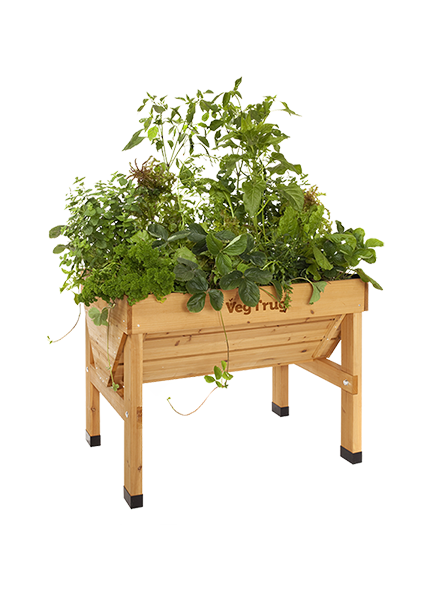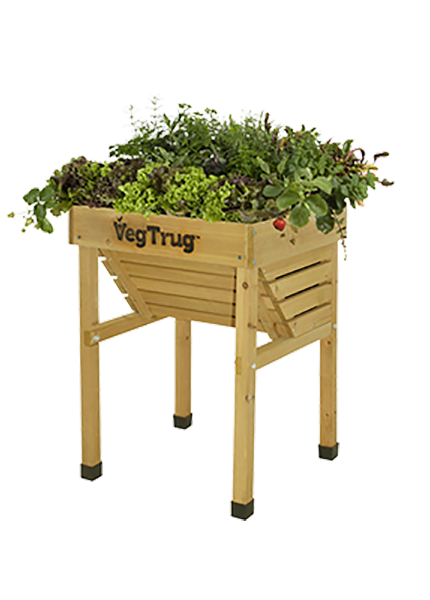Named as one of the world’s super-berries, thanks to their nutritional value, blueberries are easy to care for and great in smaller spaces too. When they thrive, you’ll also get an array of attractive white flowers.
Read more on how to grow Blueberries below.
You can plant a blueberry bush throughout the year, as long as the ground isn’t frozen.
Plant in moist, well-drained, acidic soil. Blueberries prefer light soils rather than heavy clays. Choose a sunny, sheltered spot. While blueberries are tolerant of shade, better crops (and autumn colour) are obtained in the sun.
Blueberries are very fussy about soil acidity and they will not grow well if planted in alkaline soil. Soil acidity can be measured by a pH testing kit, which you can buy from most garden centres. The pH of your soil needs to be pH 5.5 or lower for blueberries to thrive and if your soil is marginally higher than this, you can try lowering the pH by adding sulphur chips well in advance of planting.
If your pH is higher, if your soil is a heavy clay, you’re best planting blueberries in a container.
If you want to know how to grow blueberries in a container successfully, choose one that is at least 30cm (12in) in diameter for young plants. Move the plant to a 45-50cm (18-20in) container when it outgrows the first one.
When planting, place a crock (small piece of broken clay pot, or polystyrene) across the drainage hole to retain the compost and use an ericaceous compost
Ericaceous compost has a higher acidity and is named after the family of plants that like to grow in it including azaleas, cranberries and blueberries.
If growing blueberries in garden soil, add plenty of bulky, acidic organic matter such as pine needles, leaf mould or composted conifer clippings. Avoid well-rotted farmyard manure as this is too rich and alkaline.
While some blueberry cultivars can produce a good crop on their own, all yield much more heavily if planted near another, different cultivar. Check the labels on the plants when you buy.
Once you know how to grow Blueberries you’ll find they are relatively easy to look after. Keep the compost or soil moist, but not soaking wet. Don’t allow it to dry out between waterings. Water plants with rainwater, not tap water, unless you have no alternative in a drought. Tap water will raise the pH level and blueberries like acidic conditions.
Ensure the soil stays at pH of 5.5 or lower, to avoid problems. Check the pH of the soil in spring and add sulphur chips if it needs lowering. This shouldn’t be necessary with container-grown plants provided ericaceous fertiliser and rainwater are used.
Feed container plants every month using a liquid fertiliser formulated for ericaceous plants (lime-hating plants), following the manufacturer’s recommendations.
You may find open ground plants don't need feeding apart from the annual ericaceous mulch and a high nitrogen feed such as sulphate of ammonia in late winter. Blueberries are sensitive to overfeeding.
Pruning is rarely needed in the first two years. After that you should prune in late February to early March. Once you start pruning, you should aim to remove a quarter of old wood at the base every year to keep the plant productive.
In colder regions, many cultivars will need winter protection. In spring, flowers may need some fleece protection if frost threatens.
You’ll find many birds, but pigeons in particular, love the fruit from Blueberries. Netting, or a VegTrug cover, can be effective in preventing your crop being eaten.
You might find aphids and vine weevil on new shoots. Vine weevil are hard to spot and the larvae eat the roots. You might first see notches on the leaves or wilted plants.
You can remove aphids by hand and introducing natural predators can also help organically control these pests. You can purchase nematodes, an organism that eats the vine weevil larvae.
Powdery mildew can sometimes be an issue. Giving the plants plenty of room can reduce the chances of this occurring.
As soon as your Blueberries are ripe, that is a deep blue colour, pick and use them fresh. Leave the green ones to ripen. They can be easily frozen too.
How to grow Blueberries is part of the VegTrug Grower’s Guide.

